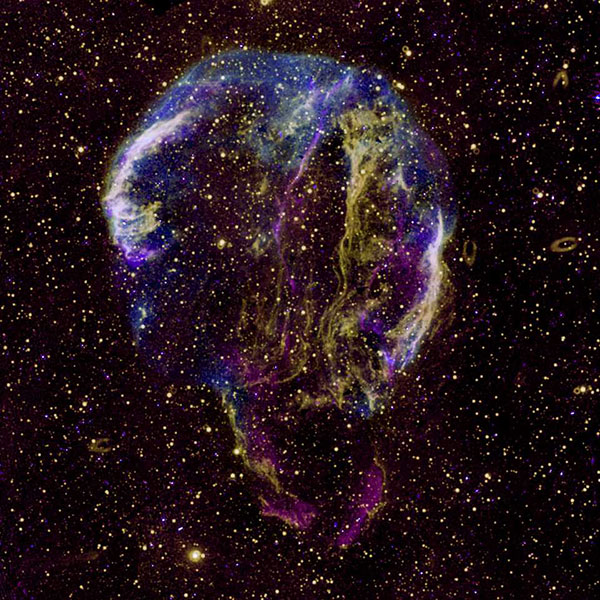NEWSFLASHES
JUWELS Helps Process a Treasure Trove of Data to Update Star Maps
Newsflash 02/2022 –

The remnants of a supernova, dubbed Cygnus Arc, are shown here in radio, UV, and X-ray wavelengths. Image credit: Jennifer West
After 7 years of painstaking data collection, an international team of researchers using the Low-Frequency Array (LOFAR) radio telescope have peered further into space, deepening our understanding of the universe. In their search for new celestial bodies, the team has revealed 4.4 million galaxies, with more than a million of those being previously unknown.
These findings, while massive in scope, actually only update roughly a quarter of our celestial map for the northern hemisphere, meaning that the massive amount of data already collected will grow much larger in the years to come.
To support this effort, researchers and staff at the Jülich Supercomputing Centre (JSC) have offered to host data retrieved from LOFAR. The centre currently hosts roughly a third of the 55 petabytes of data—more data than could fit on 20,000 laptops. In addition to storing such a massive amount of data, researchers also need supercomputers to analyse the datasets. Thankfully, JSC is also home to JUWELS, currently the fastest computer in Europe.
"This enormous amount of data generated by the LOFAR telescope can only be meaningfully processed with the help of high-performance computers stationed throughout Europe,” said Dr. Matthias Hoeft of the Thuringian State Observatory Tautenburg, one of the institutions involved in the LOFAR project. “A major challenge is the recalibration, for which we were able to rely, among other things, on the Jülich supercomputer JUWELS.”
For more information, read the original press release on ASTRON’s website.
For access to the initiative’s data releases, please visit https://lofar-surveys.org.